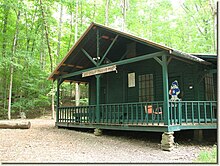HR 6384
HR 6384| 관측 데이터 에폭 J2000 이쿼녹스 J2000 | |
|---|---|
| 별자리 | 아라 |
| 우측 상승 | 17h 14m 13.40536s[2] |
| 탈위임 | –56° 53′ 18.6897″[2] |
| 겉보기 크기(V) | 6.153[1] |
| 특성. | |
| 스펙트럼형 | M1/M2II/III + A[3] |
| U-B색지수 | +1.340[1] |
| B-V색지수 | +1.787[1] |
| 변수형 | 타원형 변수[4] |
| 아스트로메트리 | |
| 방사 속도(Rv) | -34.0±4.0km[5]/s |
| 적정운동(μ) | RA: 2.760마스[2]/yr Dec.: –7.033[2]mas/yr |
| 시차(시차) | 2.2407 ± 0.120 마스[2] |
| 거리 | 1,500 ± 100 리 (450 ± 40 pc) |
| 절대치수(MV) | −2.20[5] |
| 세부 사항 | |
| 반지름 | 160.39+9.31 −23.02[2] R☉ |
| 루미도 | 3,732±368[2] L☉ |
| 온도 | 3,562+287 −99[2] K |
| 기타 지정 | |
| 데이터베이스 참조 | |
| 심바드 | 자료 |
HR 6384는 제단인 아라의 남쪽 별자리에 있는 2진 별 체계다.이 시스템은 6.153을 중심으로 변동하는 외관상 시야를 결합해 육안으로 희미하게 보이고,[1] 태양으로부터 약 1300광년(400파섹) 거리에 위치한다.[2]그것은 약 -34 km/s의 방사상 속도로 더 가까이 표류하고 있다.[5]
이 시스템은 클래스 A 이상의 뜨거운 2차 구성 요소와 상호 작용하는 가까운 이진수인 것으로 보인다.[7]그것은 80일의 기간과 0.08의 진폭 변화를 가진 타원형 의심 변수를[4] 형성한다.[8]주요 성분은 M1/M2의 별 분류를 가진 노화된 적색 거성/밝은 거성이다.II/III,[3] 현재 점근성 거대 가지에 있다.[9]중심부의 수소 공급이 소진되면서 태양의 160배까지 확대됐다.그것은 3,562 K의 유효 온도에서 확대된 광권으로부터 태양의 3,562배의 광도를 방출하고 있다.[2]
참조
- ^ a b c d e Walker, W. S. G.; Marino, B. F.; Herdman, G. (August 1985), "Photometry of HR 6384 - an 80 Day Ellipsoidal Binary?", Information Bulletin on Variable Stars, 2775: 1, Bibcode:1985IBVS.2775....1W.
- ^ a b c d e f g h i j Brown, A. G. A.; et al. (Gaia collaboration) (August 2018). "Gaia Data Release 2: Summary of the contents and survey properties". Astronomy & Astrophysics. 616. A1. arXiv:1804.09365. Bibcode:2018A&A...616A...1G. doi:10.1051/0004-6361/201833051. 이 소스에 대한 가이아 DR2 기록 VizieR.
- ^ a b Houk, Nancy (1979), Michigan catalogue of two-dimensional spectral types for the HD stars, vol. 1, Ann Arbor, Michigan: Dept. of Astronomy, University of Michigan, Bibcode:1978mcts.book.....H.
- ^ a b Samus, N. N.; et al. (2017), "General Catalogue of Variable Stars", Astronomy Reports, 5.1, 61 (1): 80–88, Bibcode:2017ARep...61...80S, doi:10.1134/S1063772917010085, S2CID 125853869.
- ^ a b c Anderson, E.; Francis, Ch. (2012), "XHIP: An extended hipparcos compilation", Astronomy Letters, 38 (5): 331, arXiv:1108.4971, Bibcode:2012AstL...38..331A, doi:10.1134/S1063773712050015, S2CID 119257644.
- ^ "V829 Ara". SIMBAD. Centre de données astronomiques de Strasbourg. Retrieved 2019-12-07.
- ^ Ake, T. B.; Parsons, S. B. (March 1985), "HR 6384: a Probable Interacting Binary", Information Bulletin on Variable Stars, 2686: 1, Bibcode:1985IBVS.2686....1A.
- ^ Hoffleit, Dorrit (1996), "A Catalogue of Correlations Between Eclipsing Binaries and Other Categories of Double Stars", The Journal of the American Association of Variable Star Observers, 24 (2): 105–116, Bibcode:1996JAVSO..24..105H.
- ^ Eggen, Olin J. (July 1992), "Asymptotic giant branch stars near the sun", Astronomical Journal, 104 (1): 275–313, Bibcode:1992AJ....104..275E, doi:10.1086/116239.



